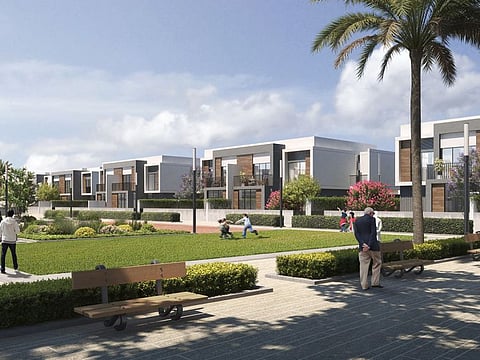In Dubai, city’s re-development is about new and old locations alike
Recreating Deira and Bur Dubai districts will fit in well even as city extends outwards to

The word ‘gentrification’ was coined by British sociologist Ruth Glass in 1964. In her book ‘London: Aspects of Change’, she described the upheaval in certain neighborhoods by the middle-class “gentry” from the countryside.
“One by one, many of the working class quarters have been invaded by the middle-class. Once this process of gentrification begins, it goes on rapidly until all or most of its existing occupants are displaced and the whole social character of the district is changed”, she wrote.
Cities do not gentrify unless the process is profitable for developers. The city wasn’t always profitable; historically developers made much more money by building in the suburbs. This changed radically in 1979 once Neil Smith came up with what has become possibly the most influential academic theory on gentrification - the rent gap.
He posited the theory that the rent gap was the disparity between how much a property was worth in its current state and how much it would be worth gentrified. The larger the gap, the higher the probability that it would be gentrified. This implies that there would be a starvation of capital at one time, followed by a deluge in the locational see-saw is what makes the process of gentrification predictable.
Of course, this process is a decades’ long affair, and involves micro-gentrification down to the level of individual buildings, which might have fallen into disrepair or otherwise stalled due to legal issues. In the affordable segment, the need to gentrify becomes less of an imperative, but even here, as the rent gap widens, capital rushes in to take advantage of the disparity in home values.
Luxury nests, but empty
One way to look at the affordable segment of the market is as a housing market parable that is not primarily intended - especially at the upper end - to actually house people. When looked at it from this angle, the housing market is used as a financing tool, by encouraging buyers to treat homes like banks, as places to put their money (especially given the low interest rate environment), whether or not they actually live in them.
It motivates developers to build increasingly luxurious properties with the prospects of highest returns and yet housing fewer residents. The pandemic brought some of the dangers painfully to light, as smaller developers were being priced out of the market and thereby revealing the painful flaw - the housing market is still not catering to the needs of those that are working.
The 2040 gameplan
The subsequent runaway success at the upper end, it turns out, led to micro-gentrifiers being left out of the upsurge as larger waves of capital washed through the system.
Dubai’s 2040 urban plan attacks this process at both ends, making it breathtaking in its scope of ambition. On the one hand, the revitalization of Deira and Bur Dubai districts presents more opportunities for gentrification, something that we have already seen underway. On the other, the Dubai South district is poised to become the new gateway for culture, affordable housing and development to take root, well past the seminal Expo event.
As the city continues to build its brand, it will never be associated with a Walmart or Tesco. Rather, it will be more in sync with its luxury offerings. But that is only one side to the city.
As it has repeatedly shown, its ambition encompasses the need to be relevant in all sectors of life. For that to take root, it is once again building something new, to keep its heart and soul alive and kicking. This kind of regulation in city planning serves as a model for development, arresting the trend of declining suburbs as well as infusing vitality in the city’s downtown districts for all facets of life to prosper.
This has multi-faceted objectives, not least being the fact that rents have to be affordable in areas such that cultural expression at all ends can flourish. This has already happened organically as a result of the pandemic. But Dubai’s determination to succeed as a cultural hotspot has made its new urban plan a masterstroke of where the city is headed. This by a pellucid process of infrastructure enablement around the Expo event such that creativity and cultural expression continues to take root.
For the city, as well as for developers who have long extolled the virtues of affordable housing - which historically was under the purview of the government sector – it’s time to start building once again.
Sign up for the Daily Briefing
Get the latest news and updates straight to your inbox








